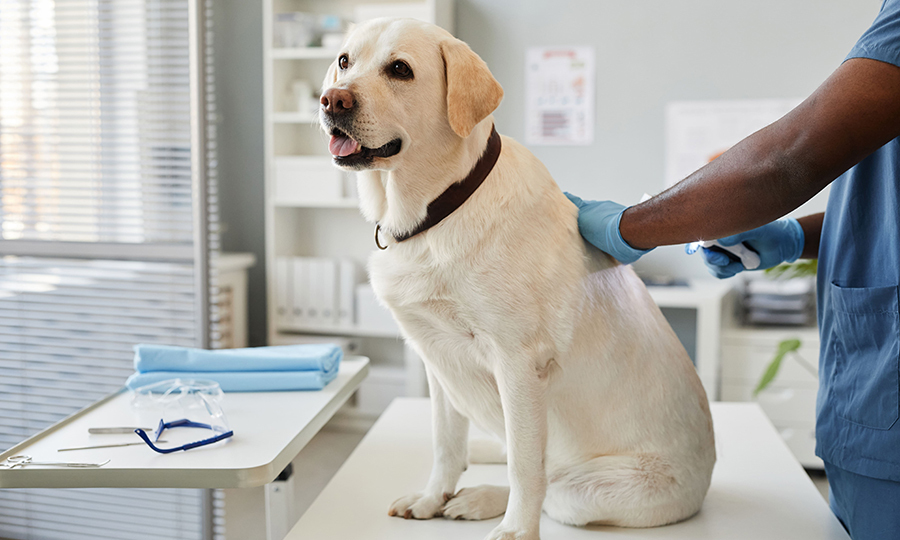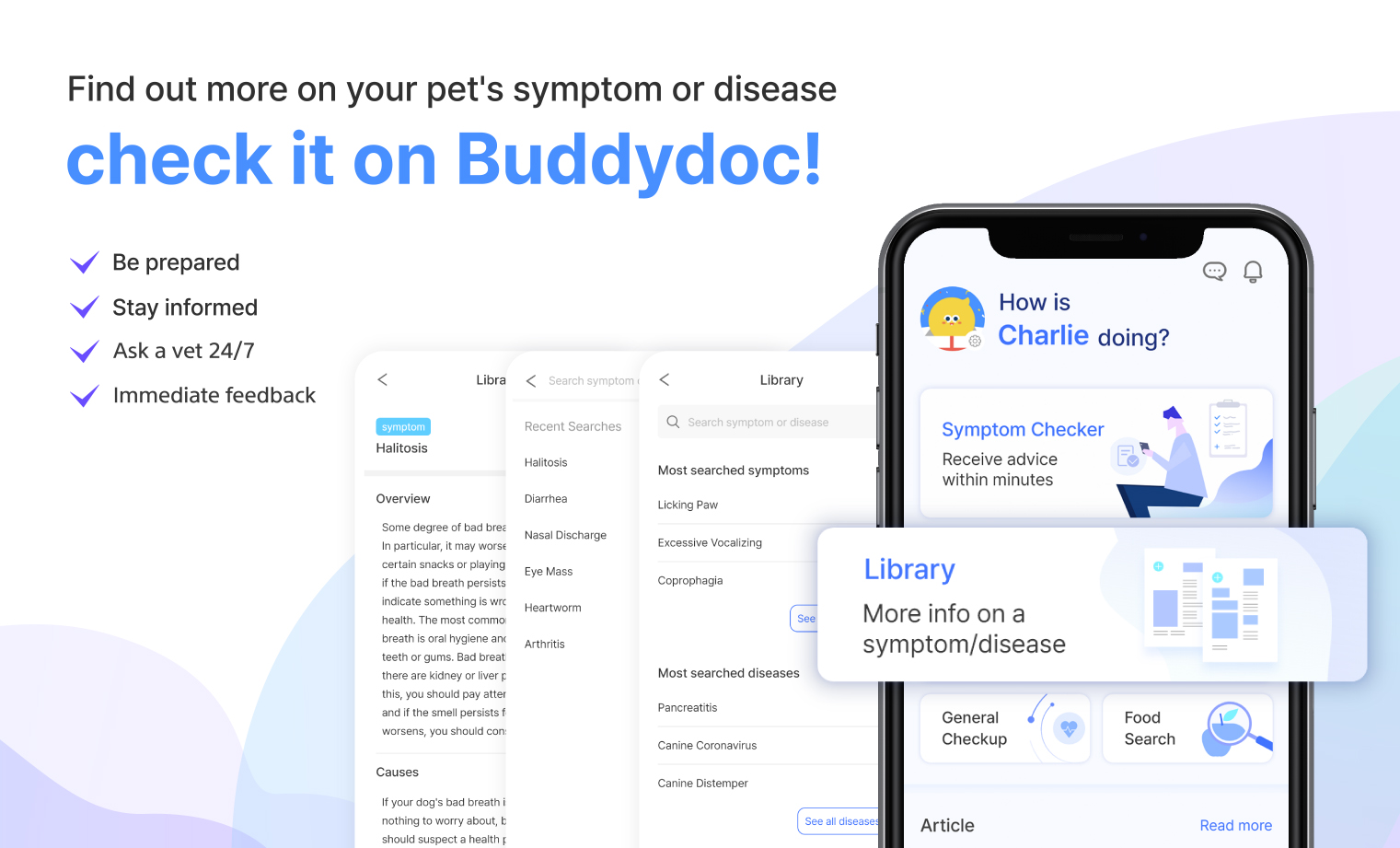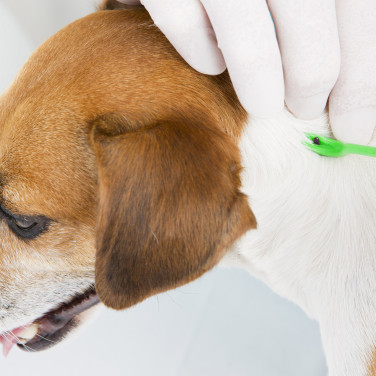DISEASES
Von Willebrand Disease (vWD) in Dogs - Everything to Know About vWD
페이지 정보
본문


What is von Willebrand disease in dogs?
Von Willebrand Disease (vWD) is the most common bleeding disorder in humans and dogs. This disease is characterized by a deficiency of a specific protein that is necessary for platelet aggregation. The protein, called von Willebrand factor, was named after the physician who first identified it. Platelets, which circulate in the blood, prevent bleeding by aggregating at sites where blood vessels have been damaged.
The symptoms of vWD can include persistent bleeding from the nose and gums, as well as bleeding after surgery, and the presence of blood in bowel movements and urination. The diagnosis of vWD is usually confirmed through blood tests that can detect the presence of von Willebrand factor or through DNA tests.
Unfortunately, there is no cure for von Willebrand disease, and if bleeding persists, it is important to seek medical attention immediately. Treatment typically takes measures to stop the bleeding by other means or by administering blood transfusions.
Causes of von Willebrand disease in dogs
Von Willebrand disease is caused by a congenital mutation in the gene responsible for producing von Willebrand factor, resulting in the deficiency. Although this condition can occur genetically in many breeds, it is most prevalent in Doberman Pinschers and typically manifests around the age of 4. A study conducted on 15,000 Doberman Pinschers found that over 70% of them had this condition. The good news is that most of the affected dogs were asymptomatic at the time of examination and the actual symptoms of VWD are typically mild.
In addition to the Doberman Pinscher breed, von Willebrand disease occurs in the following breeds as well:
- German Shepherds
- Golden Retrievers
- Greyhounds
- Pembroke Welsh Corgis
- Pointers, poodles, and papillons
- German Pinschers
- Kerry Blue Terriers
- Scottish Terriers
- Shetland sheepdogs
- Bernese mountain dogs
Symptoms of von Willebrand disease in dogs
Although, von Willebrand disease often has no specific symptoms. You may notice some of the following symptoms:
- No bruising on the skin
- Bleeding after neutering
- Bleeding in the eyes, nose, vagina, bladder, or gums
- Persistent bleeding after trauma or surgery
- Persistent bleeding after childbirth (female)
The risk of von Willebrand disease in dogs
Types of von Willebrand disease
Three types of von Willebrand disease range from severity, the least severe being type 1 and the most severe being type 3.
-
Type 1 VWD
The most common type of VWD, and is characterized by an abnormally low amount of the vWF protein but can still be formed normally.
-
Type 2 VWD
The cells of the vWF proteins have an abnormal structure which prevents them from functioning properly.
-
Type 3 VWD
There are practically no proteins and is considered the most severe form of von Willebrand disease.
If your dog is diagnosed with von Willebrand disease, it is essential to exercise caution when administering medications. Certain medications can potentially decrease platelet function, which may lead to an increased risk of bleeding. After being diagnosed with VWD, it is vital that you consult with your veterinarian before giving any medication to your dog to prevent any further complications.
Medications that are known to affect dogs with VWD:
- Antibiotics such as ampicillin/amoxicillin, penicillin, or a sulfa-based antibiotic
- Some antihistamines
- Some antacid medications
- Estrogen
- Anticoagulants such as heparin
- Nonsteroidal anti-inflammatory drugs (NSAIDs) such as aspirin, meloxicam, carprofen, and deracoxib
- Tranquilizers such as phenothiazine
- Bronchodilators such as theophylline
To ensure the safety of breeds that are prone to von Willebrand disease, it is recommended to consult with a veterinarian to check for any bleeding disorders before undergoing surgery or delivery. If a bleeding disorder is present, it is essential to prepare for potential blood transfusions before proceeding with the surgical procedure or delivery.
How to manage von Willebrand disease in dogs at home
While VWD has been well researched to establish the association between the severity of VWD in humans in response to psychological stress. While there is no confirmation of the same effect for dogs, it is recommended to provide a stress-free environment for dogs with VWD. It is important to keep an eye out for any bleeding or bruising that may occur during walks, exercise, or outdoor play, and avoid excessive activities that may exacerbate any potential symptoms.
Diagnosing von Willebrand disease in dogs

Von Willebrand's disease may first be detected during procedures such as neutering in young dogs when bleeding does not stop. Alternatively, it may remain undetected until later on when a bleeding event occurs. To diagnose this condition, the buccal mucosal screening time test may be performed. This involves measuring the amount of time it takes for bleeding to cease after a small cut is made on the inner lip of the dog. If bleeding persists, particularly in breeds with a predisposition to this disease, it may indicate the presence of von Willebrand's disease.
For an accurate diagnosis, the amount of von Willebrand factor (vWF) can be measured. A blood sample is taken to measure the amount of von Willebrand factor present, and some breeds can be diagnosed through DNA genetic testing.
Treatment for von Willebrand disease in dogs
Von Willebrand disease does not have a direct treatment, therefore it is important to seek immediate veterinary care if excessive bleeding occurs. Hemostasis and blood transfusion are possible treatments that can be administered at a veterinary hospital. In cases of severe acute bleeding, blood transfusions are necessary. Before blood transfusions, a medication called DDAVP can be used to increase the concentration of vWF in the blood. However, the effectiveness of DDAVP may vary from dog to dog, and is an expensive medication that is not commonly used. Additionally, if surgery is required, blood transfusions may be given to prevent excessive bleeding.
Preventing von Willebrand disease in dogs
Due to its genetic nature, von Willebrand disease calls for limiting breeding in dogs affected by this condition. You may also consult with your veterinarian for preventive measures that can reduce the chance of injuries to your pet.
Find out more about your dog’s symptoms and diseases on the Buddydoc app!

The Buddydoc library is filled with everything you’d want to know about each symptom and disease your pet may experience. If you would like to find out more about the causes, signs, treatments, preventions, and more for your dog’s disease. Try out the Buddydoc app and search for your pet’s symptoms or diseases in the Buddydoc library.













